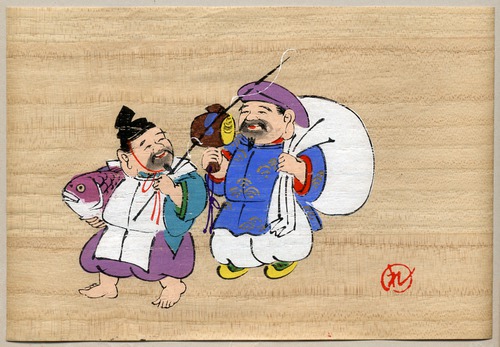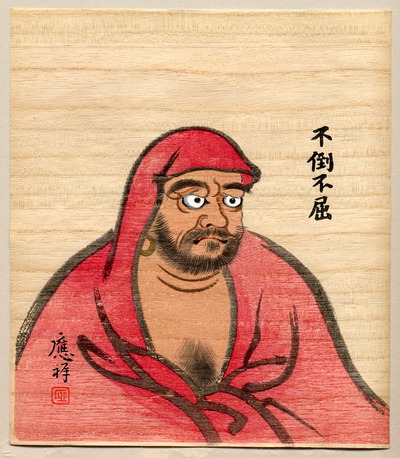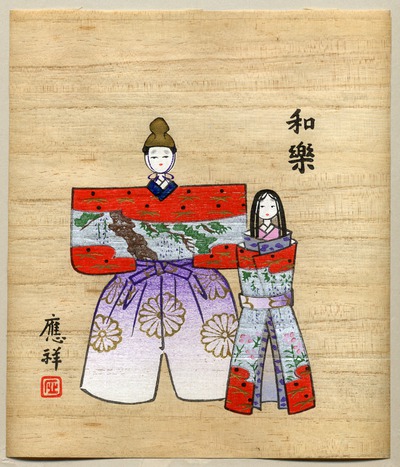« Trouble Afoot ... more about colour separations | Front Page | "No" »
Woody Mystery!
Posted by Dave Bull on November 29, 2013 [Permalink]
Let's have a mystery this evening - I hope some of the readers of this blog can help solve it!
Japanese woodwork techniques are world-famous, and among these is the ability of some craftsmen to peel very fine shavings with a plane. Some men are so adept at this that they can peel a shaving so wide and long that it seems like a sheet of paper.
A sheet of paper ... now what might such a wide and thin wood shaving be useful for?
How about something like this?

... or this ...

... or this ...

Yes indeed, such shavings can be so thin - my micrometer gives .12mm - that they are able to be used as the base for making woodblock prints! I obtained multiple copies of these three little prints on a Yahoo Auction the other day. They were uploaded to the auction site together with the blocks from which they were printed. I bid on the three lots, and won them.
The blocks are wrapped in newspaper dating from 1973, and that seems about right for these; I would guess they are from a Kyoto workshop, and the prints were probably aimed at the tourist market there (both domestic and foreign tourists). The workshop must have felt that by printing these on the ultra-thin wood shavings, it would give then an appeal over and above a more typical print.
They certainly caught my eye!
But as I said, there is a mystery. Have a look at this image of the third print:

I have marked areas where the wood grain repeats. If you click the enlargement and look carefully, you will see that the grain repeats, but not in exactly the same pattern, like modern furniture that has a fake woodgrain pattern photographically reproduced on it. This is real wood, and the grain varies ever-so-slightly from one section to the next, just as though the four pieces had been sliced one-by-one from a single block of wood.
But this doesn't seem possible. I could easily understand the craftsman gluing a few smaller pieces of wood together to make a larger block which he would then plane down to create the thin sheets for the printmakers to use. But this was clearly not done that way - these were planed off and then edge-jointed together, and I simply can't wrap my head around how .12mm pieces of wood could be edge-jointed.
Anybody have any insights to how these might have been made?
***
[Update: the follow-up post is here ...
Add Your Input